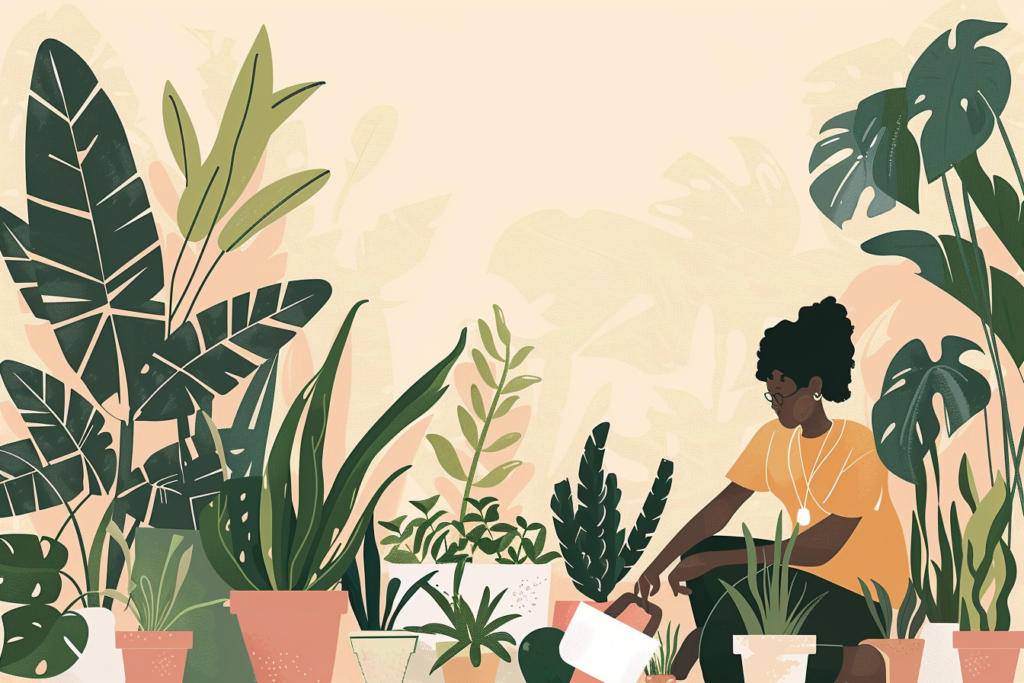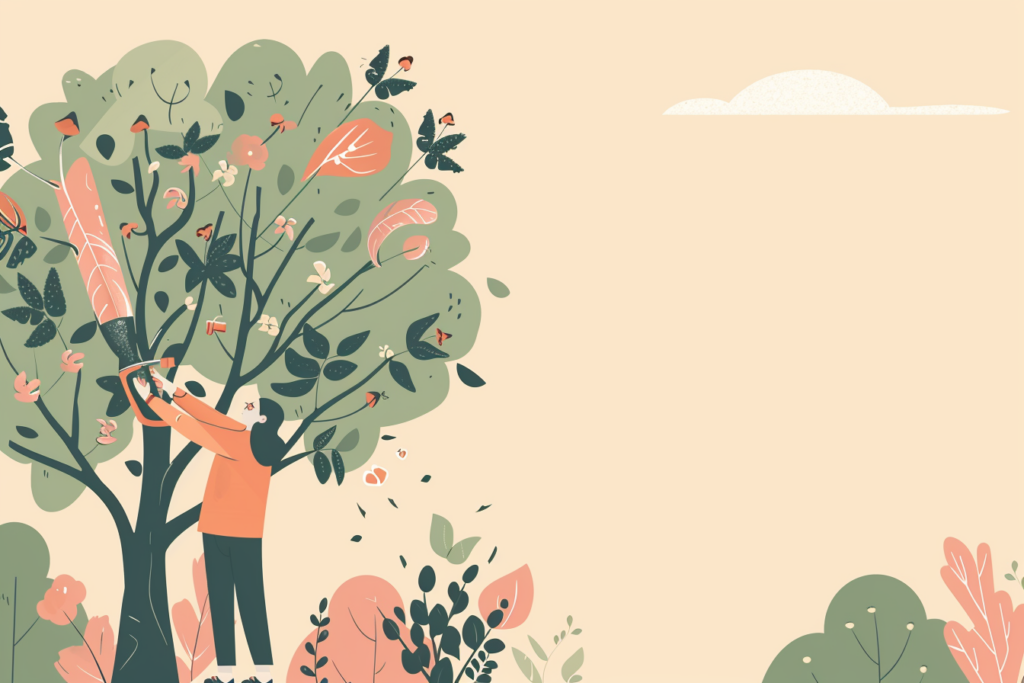Sustainable landscaping is an environmentally friendly approach to designing and maintaining your outdoor spaces. This method focuses on creating a natural habitat that benefits plants, animals, humans, and the ecosystem. Sustainable landscaping aims to minimize environmental impact by using resources efficiently, reducing waste, and promoting biodiversity.
Keep reading to learn more about sustainable landscaping for homeowners, providing tips and strategies to help you create a beautiful and eco-friendly garden.
Understanding Sustainable Landscaping
Sustainable landscaping begins with understanding your area’s natural ecosystem. It involves selecting plants native to your region, conserving water, improving soil health, and, at the same time, reducing the use of chemical pesticides and fertilizers.
By adopting sustainable practices, you can create a landscape that is not only beautiful and functional but also harmonious with the local environment.
Benefits of Sustainable Landscaping
There are several benefits to conserving your landscape. Here are a few reasons:
- Conserves Water: Through practices like rainwater harvesting and drip irrigation.
- Supports Local Wildlife: By providing habitats for beneficial insects, birds, and other wildlife.
- Reduces Chemical Usage: Minimizing exposure to harmful pesticides and fertilizers.
- Low Maintenance: Native plants require less care than non-native species.
- Enhances Biodiversity: Promotes a variety of plants and animals, contributing to ecological health.
- Cost-Effective: Reduces water, fertilizer, and maintenance costs over time.
Planning Your Sustainable Landscape
Before taking the plunge into a sustainable landscape, there are a few things you need to do as you plan.
Analyze Your Site
Understand your yard’s ecosystem by noting the sun exposure, soil type, moisture levels, and existing vegetation. This information will guide your landscaping decisions.
Design with Nature
Aim to work with your land’s natural features rather than against them. Consider the flow of water, wind patterns and how you can incorporate existing vegetation into your design.
Choosing the Right Plants

Different plants thrive in different environments. A cactus and a fruit tree, might not grow in the same climate with the same soil. It is important to understand where you live and what will stay alive in your soil. Here are a few things to consider when choosing which plants to grow.
Go Native: Native plants are adapted to your local climate and soil, making them more drought-resistant and less susceptible to pests. This means, they and survive with less water and maintenance than non-native species.
Diversify Your Plant Selection: Various plants promote a healthy ecosystem by attracting beneficial insects and wildlife.
Avoid Invasive Species: Invasive plants can overtake your garden and local habitats, displacing native species.
Water Conservation Techniques
Here are the top three water conservation techniques to improve the sustainability of your landscape.
- Rainwater Harvesting: Collect rainwater from your roof in barrels to water your garden, reducing your reliance on municipal water.
- Drip Irrigation: This efficient watering system delivers water down at the base of plants, minimizing evaporation and runoff.
- Xeriscaping: Incorporate drought-tolerant plants and minimize lawn areas to reduce water usage.
Soil Health and Mulching
Adding compost, is not only a great way to reuse your waste, it also can improves soil structure in gardens, provides nutrients, and enhances moisture retention. Mulch also helps retain moisture, suppress weeds, and prevent erosion. Use organic mulch like shredded bark, leaves, or straw. Learn more about what your specific soil needs to thrive and add how much it needs to be successful.
Sustainable Maintenance Practices
Opt for natural pest control methods, such as encouraging predatory insects, using barriers and traps, and applying organic pesticides sparingly.
Hand-pull weeds or use tools instead of chemical herbicides. Mulching also helps prevent weed growth. Use organic fertilizers, which release nutrients slowly and reduce the risk of runoff into waterways.
Incorporating Wildlife Habitats
Wildlife habitats help your existing landscape and are also great to look at and watch from the inside. Here are a few great ways to embrace the natural wildlife in your landscape:
- Bird and Bat Houses: Install nesting boxes to attract birds and bats, which can help control insect populations naturally.
- Pollinator Gardens: Plant flowers that attract bees, butterflies, and other pollinators. This not only supports biodiversity but also ensures the pollination of your plants.
- Water Features: A shallow pond or birdbath can provide water for wildlife, attracting birds, butterflies, and beneficial insects.
Sustainable Hardscaping
If you are looking for a sustainable way to improve your landscaping, there are a few ways to incorporate hardscaping in an eco-friendly nature.
Permeable Paving: Use permeable materials for patios, walkways, and driveways to allow rainwater to soak into the ground, reducing runoff and recharging groundwater.
Recycled Materials: Opt for recycled or reclaimed materials for decking, fencing, and other structures.
Natural Shade: Plant trees strategically to provide natural cooling for your home, reducing the need for air conditioning.
Embracing Technology
A great way to embrace smart technology is to install a smart irrigation system. These systems can adjust watering based on weather conditions, soil moisture, and plant needs, ensuring efficient water use.
Use solar-powered lights for pathways, gardens, and accent lighting. This reduces electricity usage and costs and is a great way to incorporate an eco-friendly option into your home.
Conclusion
Sustainable landscaping is a journey that benefits not only your home and family but also the local environment and community at large. By implementing these strategies, homeowners can transform their outdoor spaces into thriving ecosystems that support biodiversity, conserve and enjoy their natural resources, while also reducing their environmental footprint.
As you embark on this journey, remember that sustainable landscaping is evolving. It encourages continuous learning and adaptation to the changing environment. Over time, you’ll witness your yard’s transformation into a more beautiful, resilient, and eco-friendly space.
Whether you’re a seasoned gardener or a beginner, the journey towards a more sustainable and eco-friendly garden is one that promises immense satisfaction and lasting benefits for both you and the planet.
You might also be interested in: How To Kill A Tree Stump For Good [8 Different Methods]




